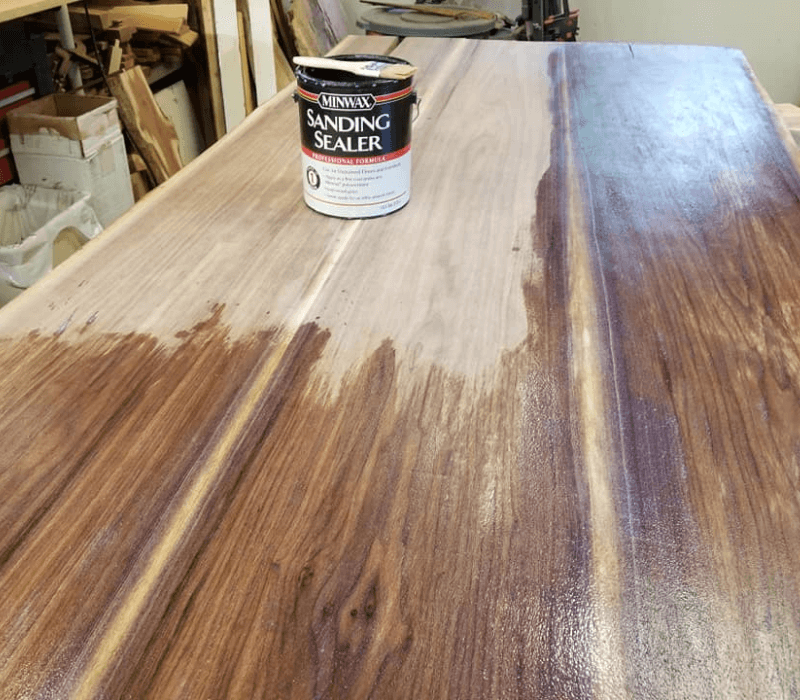Sanding is one of the crucial prepping tasks that can make or break a finish. Sanding the first coat of a finish is especially important because it will make subsequent coats go on more smoothly.
Some finishes like polyurethane, shellac, and most water-based finishes are easier to sand. However, some, like lacquer and varnish, are more difficult to sand because they tend to gum up. This is where a sanding sealer comes into play.
What is a Sanding Sealer?
A sanding sealer is a varnish or lacquer with zinc stearate added. Zinc stearate is added to make the finish build up, fill pores, and soften the finish for easier sanding. When sanding a sanding sealer, it powders off faster and easier, which makes it easier to sand the first coat for an even finish of the after coats.
Apart from providing an easier first coat to sand, sanding sealers also come with other advantages. These include reducing raised grain, sealing off problems in the wood, and lengthening the app; location time of two-part catalyzed-lacquers and conversion varnishes.
This Minwax sanding sealer is lacquer-based and seals a wood's surface, providing an easy-to-sand coat after one hour. It is available in both brushing or aerosol forms for easier application.
When To Use a Sanding Sealer
Sanding sealer is used after sanding down a piece of wood before applying the first coat of lacquer or varnish. This is because sanding the first coat is always rough, and a sanding sealer makes sanding easier. This ensures that the first coat, which is the sanding sealer, is smooth and will produce better results with the next coats of finishes.

Applying Minwax Sanding Sealer
How to Apply a Sanding Sealer
- Properly sand down the piece of wood to bare wood. While a sanding sealer helps create a smoother surface, ensure you’ve sanded it perfectly.
- Remove all sawdust from the wood using a vacuum cleaner, then wipe the bare wood thoroughly with a tack cloth or damp cloth.
- Stir the sanding sealer before you use it.
- Apply a thin coat of the sanding sealer with a good synthetic bristle brush. Do not apply a second coat because a sanding sealer is soft and will crumble. Never apply more sanding sealer than what you’ll need for easier sanding.
- Once applied, allow one hour for the sanding sealer to dry.
- Once dry, use 320-grit sandpaper to sand the sanding sealer. Once sanded and everything looks good, remove all sanding dust.
- Apply two or three coats of your desired finish.
Problems of Using Sanding Sealers
While sanding sealers come with their fair share of advantages, they also pose some problems when used on wood.
Using a sanding sealer reduces the durability of the finish. Zinc stearate, also called mineral soap, weakens the bond of the finish to the wood and reduces the finish’s water resistance, especially when the sanding sealer is applied thicker. Using a sanding sealer is only worth the trade-off if you’re working on a larger job.

